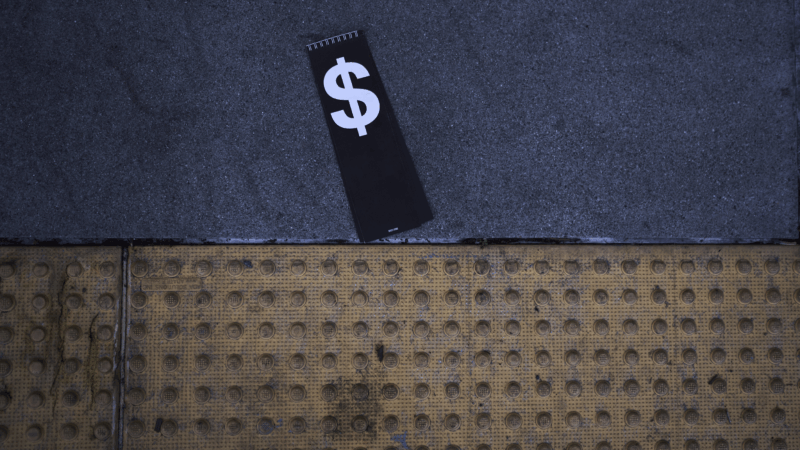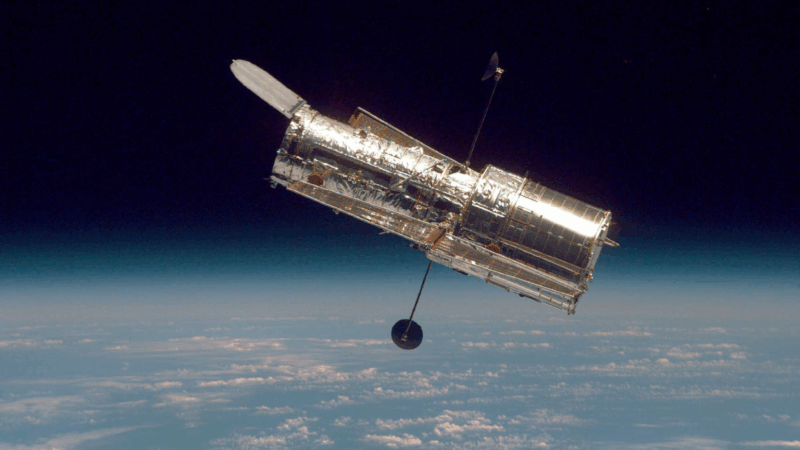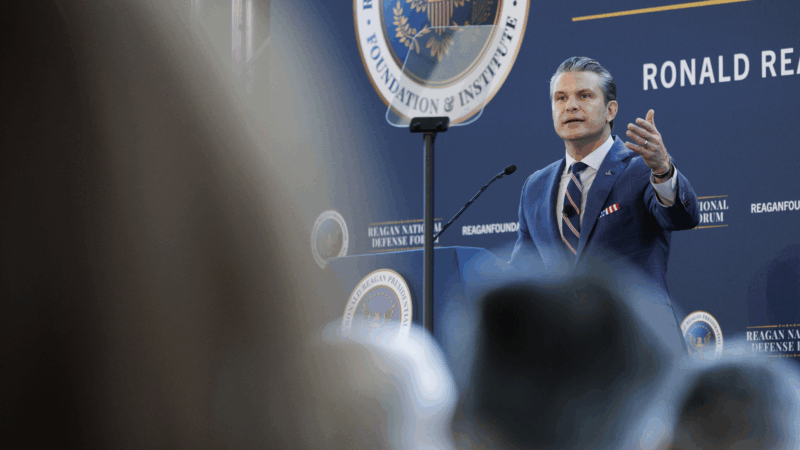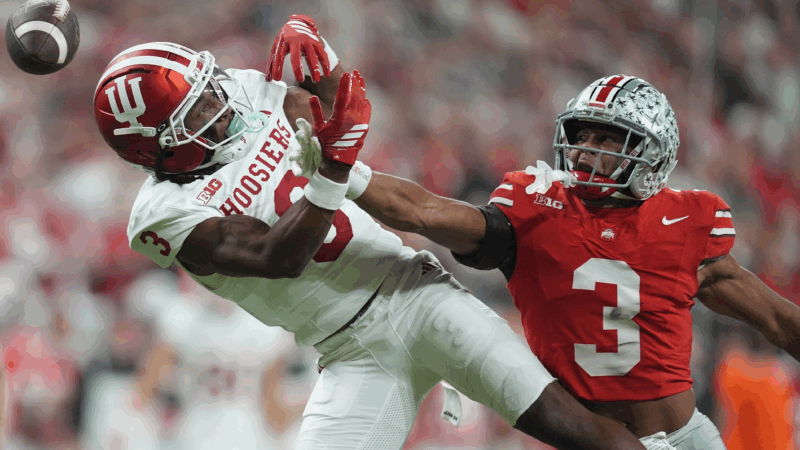Why an economist says temporary U.S.-China tariff deal doesn’t ease uncertainty
News that the U.S. and China have paused massive tariffs on each other has U.S. businesses rushing to import goods that have been sitting at ports or factories in China for the past 40 days.
The deal, announced after negotiators from both countries met in Switzerland over the weekend, brings U.S. taxes on Chinese goods down to 30% from the 145% imposed by President Trump in early April. China agreed to lower its taxes to 10% down from the 125% it imposed in response to the U.S.
Stocks surged after news of the deal. But uncertainty is a major factor that will continue to weigh on the U.S. economy, Diane Swonk, chief economist at accounting firm KPMG US, told Morning Edition.
Swonk likened it to a broken stoplight at a busy intersection.
“Everyone all of a sudden slows down to a crawl to try to creep across the stoplight, not knowing which person’s supposed to go next,” Swonk said. “And some opt out entirely and do a U-turn, wait for traffic to clear or the stop light to be fixed.”
Speaking to NPR’s Leila Fadel, Swonk shared her thoughts on why the United States’ deal with China might be a mixed news for consumers.
The good and bad news.
Swonk said the good news about the deal is that trade will flow again.
She added that it will take time for goods released in response to the lower tariffs to reach the U.S. market, so shoppers could still see some empty store shelves.
But “these sort of stop-go programs are the things that can make for very big policy mistakes,” Swonk said, adding that when considering inflation and how it impacts the U.S. economy, “we remember the pandemic and it’s much easier to shut factories down than ramp them back up again.”
“This is the same thing where all of a sudden a lot of freight shipment fees went way up in the wake of the pandemic, which was an additional cost in addition to the tariffs,” she added.
Stagflation is possible.
Swonk said the past 40 days has resulted in a paralysis on importing goods and now panic to bring them in. Those two factors, she added, can make for stagflation, a period during which the economy experiences higher costs for goods, higher unemployment and slower economic growth.
This combination is what the Federal Reserve worries about most, Swonk said. The Federal Reserve voted earlier this month to keep interest rates steady, citing concerns about economic uncertainty and the risks of higher unemployment and higher inflation.
“And it’s not just a one-time event because of the layered nature and the unevenness [with] which tariffs have been applied,” Swonk said. “It is a multiple time event that’s causing these additional disruptions into the supply chain like what we are seeing right now.”
The last time the U.S. experienced stagflation, Swonk said, was in the 1970s. During that time, oil prices spiked, as did the cost of goods and Americans accepted high inflation as a part of life.
Until the Fed knows inflation is under control, Swonk said it will have to hold off on additional rate cuts.
Agreements with other countries are going to take time.
The Trump administration has touted this latest deal with China as a success. Last week, the White House struck a deal with the United Kingdom that lifted tariffs on British steel and aluminum, but left a 10% tariff in place on most other U.K. goods. The U.K. trade deal was the first since Trump levied steep taxes across the globe.
Swonk said it’s going to be very hard for the Trump administration to hammer out 90 negotiations in 90 days with other countries, adding that even those deals that have been announced have very tentative rules around how they’re implemented.
“These things usually take years. The rule of law and the ability to enforce it is much harder when you’re not dealing in a multilateral framework,” Swonk said. “It’s harder. It’s just one-on-one transactional.”
President Trump paused tariff hikes on other countries in early April for 90 days, saying more than 75 countries had reached out about seeking deals with the U.S. Some of those tariffs could resume in early July.
The radio version of this story was edited by HJ Mai. The digital was edited by Treye Green.
Transcript:
LEILA FADEL, HOST:
We’re going to dive further into how Trump’s trade policy has impacted the U.S. economy and American consumers. Diane Swonk joins me now to discuss. She’s the chief economist at accounting firm KBMG US (ph). Good morning, Diane. Thanks for being on the program.
DIANE SWONK: Good morning.
FADEL: So this temporary relief on tariffs in this deal with China comes after a lot of big talk about how tariffs will fix things economically here in the U.S. What did you make of this deal to bring tariffs back down on Chinese imports?
SWONK: Well, it was really important in the sense that we had actually had a cessation of trade, which you just heard in your piece, where people couldn’t get things in. But the other issue is uncertainty. And these sort of stop-go kind of programs are the things that can make for very big policy mistakes. When we think about inflation and how it affects the U.S. economy, we remember the pandemic, and it’s much easier to shut factories down than ramp them back up again. And this is the same thing, where all of a sudden, a lot of freight shipment fees went way up in the wake of the pandemic, which was an additional cost in addition to the tariffs.
So the good news is we see trade flowing again. Some of the empty store shelves are still going to be there ’cause there’s a lag in terms of getting things into the country. That said, there’s a lot that’s waiting on the outside to come in as soon as – to take advantage of this. But the uncertainty issue is another major factor weighing on the economy. I often liken it to, you know, a broken stoplight at a busy intersection. Everyone all of a sudden slows down to a crawl to try to creep across the stoplight, not knowing which person is supposed to go next. And some opt out entirely and do a U-turn, wait for traffic to clear or the stoplight to be fixed.
FADEL: In practical terms, how does that end up impacting U.S. businesses and consumers, this uncertainty?
SWONK: The really hard part is not only does – it’s sort of a paralyse (ph) and panic, which is what you’re hearing. There was a paralysis for 40 days where people waited for this, and now a panic to get everything in. Those two things are stagflationary. And that is what the Federal Reserve is so worried about today, is that we’re talking about a period where the risk of inflation is much higher. And it’s not just a one-time event because of the layered nature and the unevenness with which tariffs have been applied. It is a multiple-time event that’s causing these additional disruptions into the supply chain, like what we are seeing right now.
And those are the things we worry about because stagflation is not something we’ve seen since the 1970s. And the Federal Reserve has said, listen; we know the mistakes of the ’70s, and as hard as it is, it’s better to not just look through that inflation. They’re still smarting from the fact they didn’t raise interest rates fast enough and deal with the inflation. We’re still feeling the embers of – from the pandemic. And it’s really important for them to prioritize holding off on additional rate cuts until they know the economy – the inflation is derailed.
FADEL: Now, the president imposed tariffs across a bunch of different countries, and then we saw these countries come to negotiate. We see this deal with China – temporary deal. We saw the trade deal with the U.K. last week. What does that say about the administration’s strategy when it comes to trade negotiations?
SWONK: Well, whereas – it’s very hard to have that many – 90 negotiations in 90 days. And what we’re seeing is very few actual agreements, and even the ones that are coming out have very tentative rules around them. These things usually take years. And I think it’s important – you know, the rule of law and then ability to enforce it is much harder when you’re not dealing in a multilateral framework. It’s harder. It’s just one-on-one transactional.
FADEL: Diane Swonk is the chief economist at accounting firm KPMG US. Thank you so much, Diane.
SWONK: Thank you.
Light from satellites will ruin majority of some space telescope images, study says
Astronomers have long been concerned about reflections from satellites showing up in images taken by telescopes and other scientific instruments.
Defense Department is reviewing boat strike video for possible release, Hegseth says
In a speech on Saturday, Defense Secretary Pete Hegseth defended the strikes, saying: "President Trump can and will take decisive military action as he sees fit to defend our nation's interests."
Bama, Miami in, Notre Dame out and Indiana No. 1 in College Football Playoff rankings
Nobody paying attention for the past 24 months would be surprised to see Indiana – yes, Indiana – leading the way into this year's College Football Playoff.
McLaren’s Lando Norris wins first F1 title at season-ending Abu Dhabi Grand Prix
Red Bull driver and defending champion Max Verstappen won the race with Norris placing third, which allowed Norris to finish two points ahead of Verstappen in the season-long standings.
A ban on feeding pigeons ruffles lots of feathers in Mumbai
The pigeon population has exploded — a result of people feeding the birds. For some it's a holy duty and a way to connect to nature. Critics point to health risks tied to exposure to pigeon droppings.
UN humanitarian chief: world needs to ‘wake up’ and help stop violence in Sudan
The UN's top humanitarian and emergency relief official has told NPR that the lack of attention from world leaders to the war in Sudan is the "billion dollar question".








